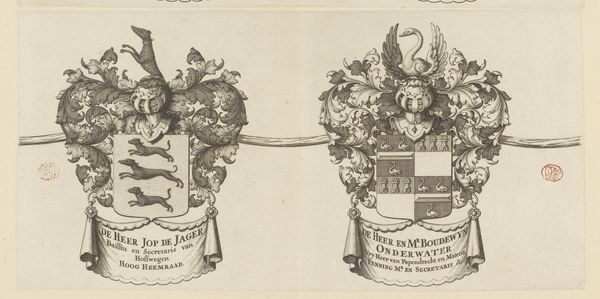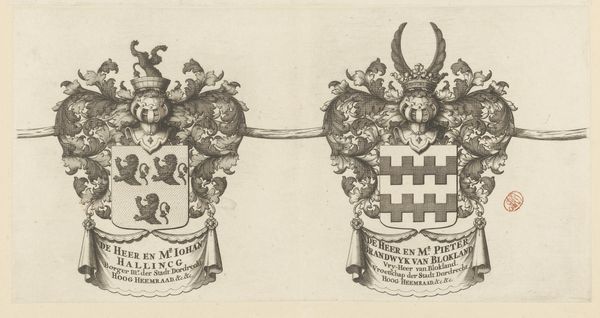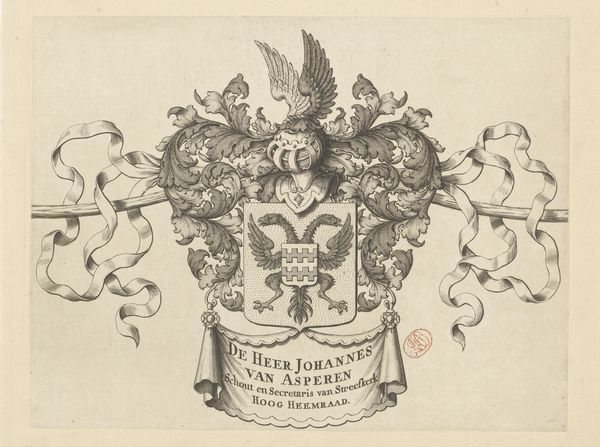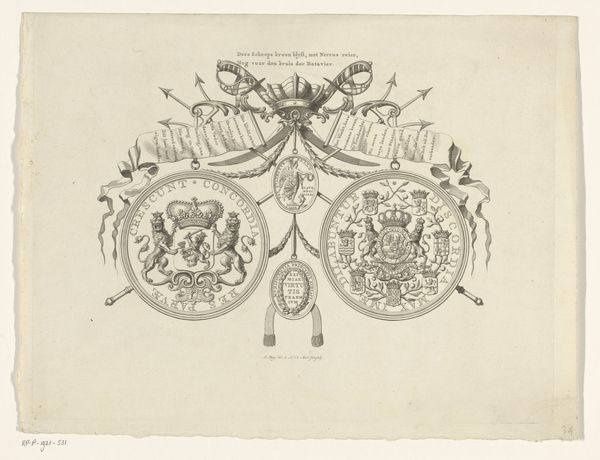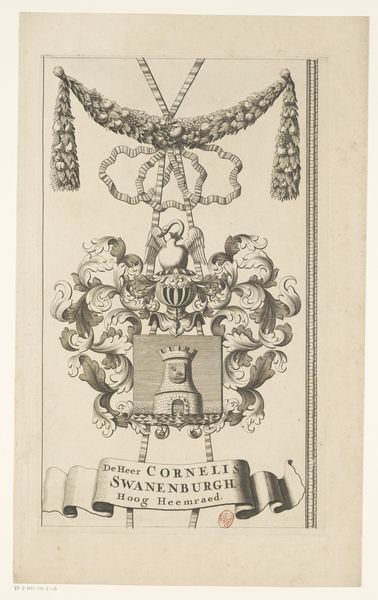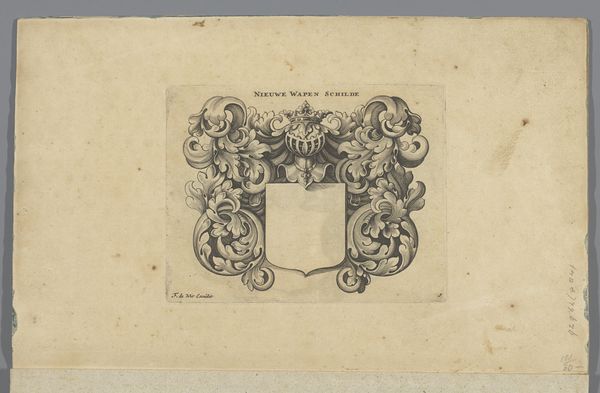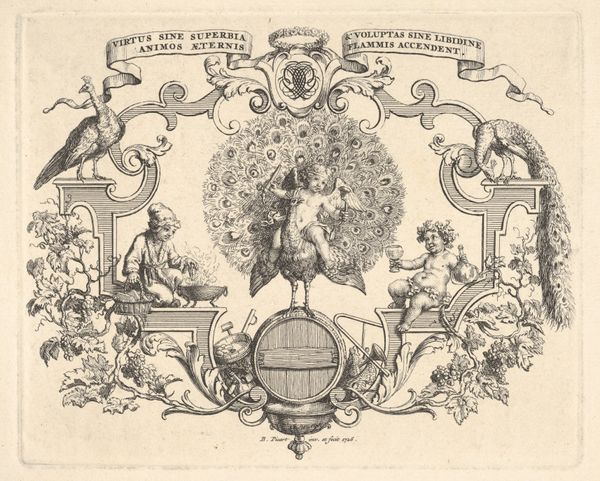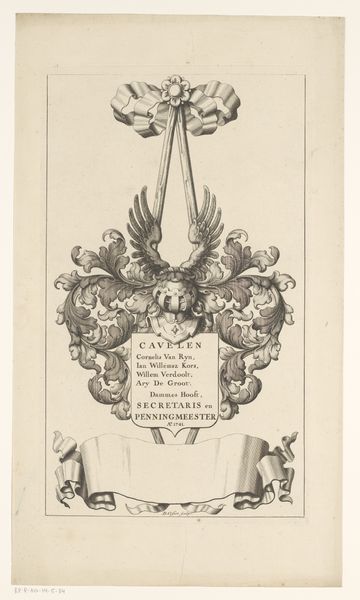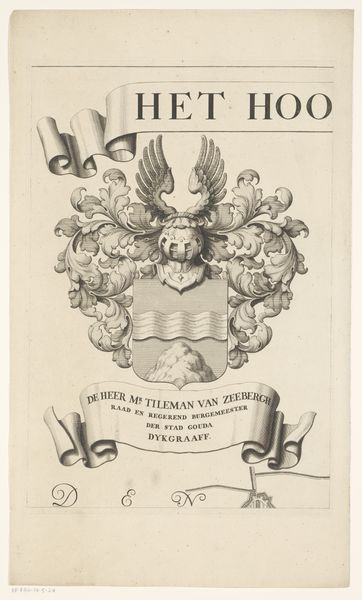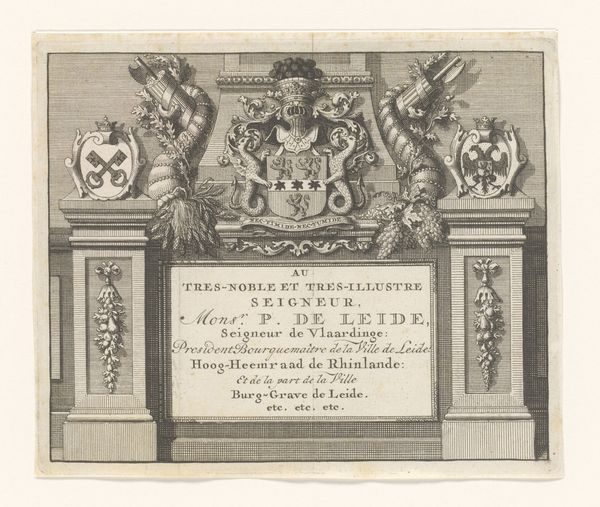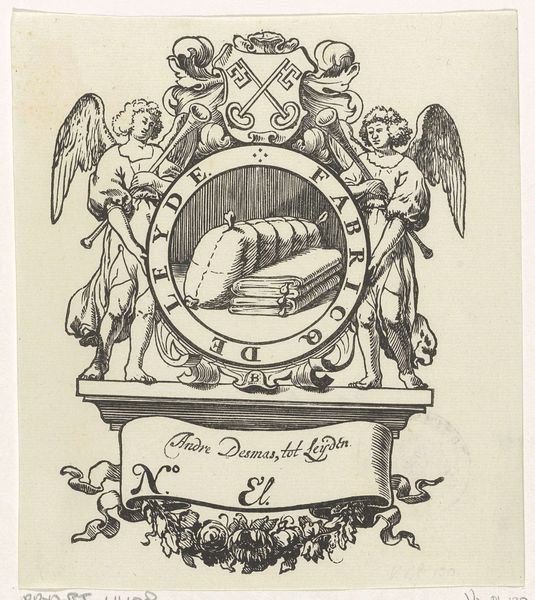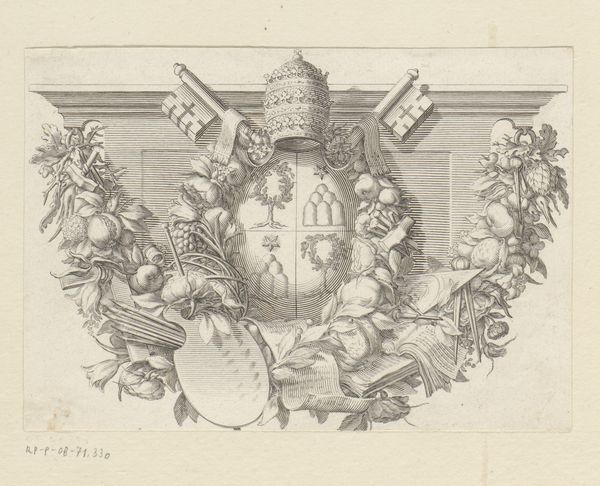
print, engraving
#
baroque
# print
#
pen sketch
#
decorative-art
#
engraving
Dimensions: height 224 mm, width 454 mm
Copyright: Rijks Museum: Open Domain
Curator: The print before us is a decorative piece entitled "Wapenrand van een kaart van de Alblasserwaard en de Vijfheerenlanden (deel)", which translates to "Border of a map of the Alblasserwaard and Vijfheerenlanden," created in 1716. It showcases ornate heraldry in the Baroque style. Editor: Immediately, I’m drawn to the intricate detail, particularly within the coats of arms. There is a really assertive presence in the plumes, leaves, and carefully hatched lines; it projects power and importance. Curator: Indeed. The print gives us insight into the power structures of the Dutch Republic at that time. These are the armorial bearings of powerful men involved in the local government, in this instance those responsible for the region’s water management. Their identity linked directly to their status and function. Editor: I’m curious about how the symbolic language used here reinforced and perhaps also obscured their actual social roles. It all feels so staged, a performance of authority, down to the meticulously rendered foliage. Were these symbols effective at convincing the wider population of their right to rule, and to control the waters which the land relied on? Curator: Absolutely. The display of heraldry, then and now, is not a neutral act, especially the display of such emblems on an important regional map. We must acknowledge its significance. These emblems and inscriptions would’ve been understood in the social contexts in which people viewed them at the time. Editor: These symbolic displays really served to visually separate them from others, further strengthening and legitimizing the dominance over those beneath them, literally controlling not just the land, but its visual representation. Curator: These weren't isolated displays; it was integrated into public life. Even now, examining these symbols gives us the means to question how authority is portrayed. Editor: Agreed. Reflecting on it, this image leaves me thinking about how symbolic representation intertwines with political control, something that persists into the present day. How symbols, especially ones that point to wealth and dominance, are deliberately designed to signal specific intentions. Curator: And, in turn, those crafted images offer a view into history, shedding light on the complexities of the Dutch Golden Age. The emblems not only decorate a historical document, but bring social structures of power into starker focus.
Comments
No comments
Be the first to comment and join the conversation on the ultimate creative platform.
